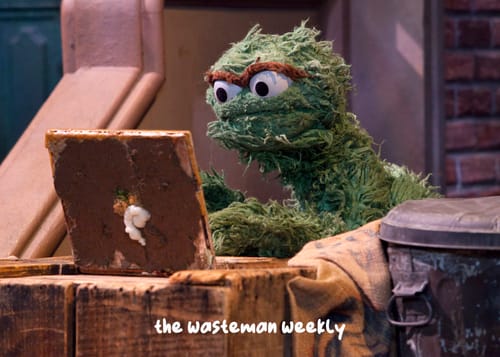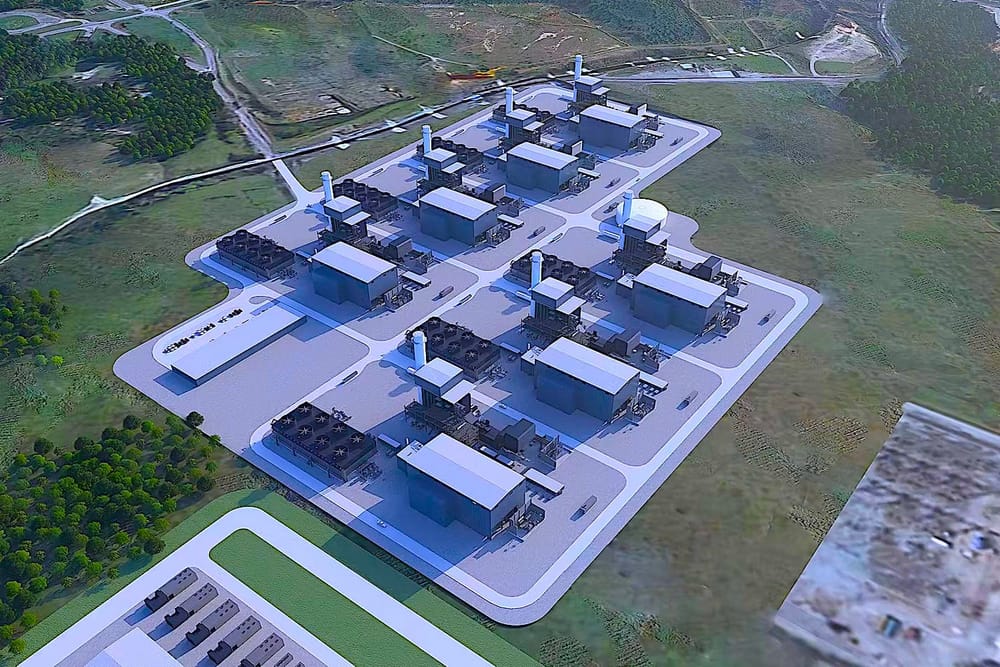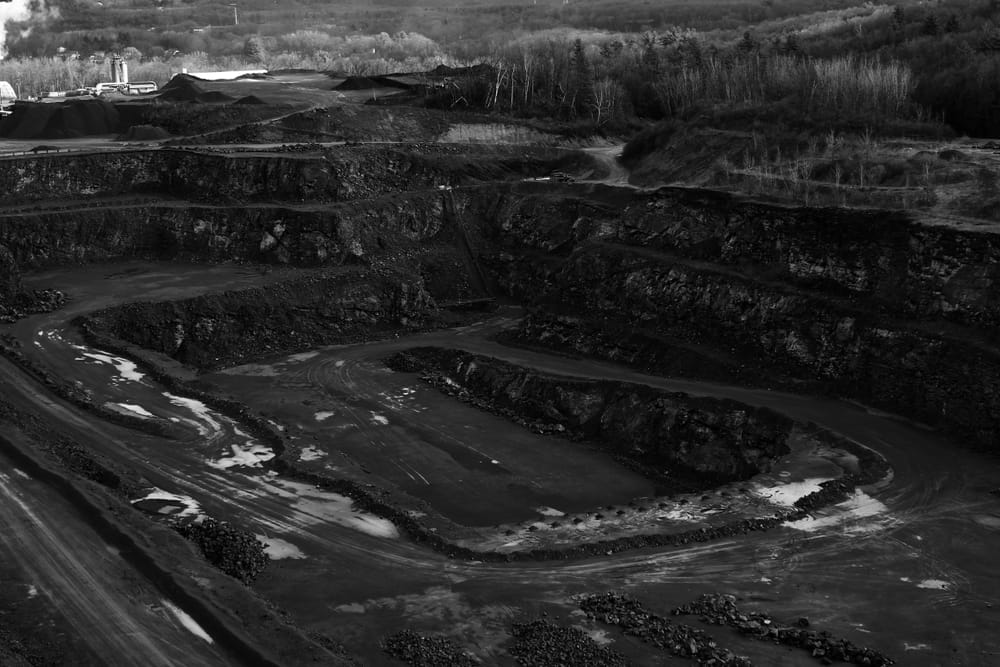Those Legos you played with as a kid are now building the case for sustainable plastics.
Legos have helped kids everywhere bring the world inside their heads to life, and so it's only right the toymaker helps preserve the world we live in too. That's why Lego CEO Niels Christiansen is adament on paying a premium to transition to sustainable materials for their beloved bricks. With their upcoming sustainability commitments on the horizon, Lego has made it clear they're ready to do whatever it takes to keep their promises- all without passing on any additional costs to their customers.
Stepping on Legos
Lego made a promise back in 2012 to find a way to use sustainable materials in its plastic building blocks by 2032, and be carbon neutral by 2050. But the journey so far has been far from easy, especially given plastics are one of the hardest and most expensive industries to decarbonize. In the past decade alone the company has invested over $150 million into personnel and R&D, with another $1.4 billion slated for the next 4 years. The focus has been on working with manufacturers to invest in more production capacity and buying renewable resins regardless of premiums that come as high as 70% in some cases.
The company suffered a setback last year when it had to ditch its most promising prototype material, made using recycled water bottles, after realizing it didn't actually lower any CO2 (something to consider next time you see a recycled-water bottle shirt). But instead of trying to greenwash their efforts, they decided to turn to the certified renewable and recycled plastics market to find a new way through. Although there currently isn't enough supply of recycled plastics for big players, production methods like Mass Balance allow Lego to procure and use over 125,000 tons of resin and make progress towards their goals.
What is Mass Balance?
Mass Balance essentially allows companies and material-auditors to track the amount of sustainable materials a company purchases, through a given supply chain, and into their finished product. Because the finished product now has all of the material mixed together, you wouldn't be able to tell how much of it came from recycled material. This is where a mass balance certificatoin comes in to give us an understanding of how much recycled material could be allocated to a product.
But don't just take it from me, let's hear Lego explain it-
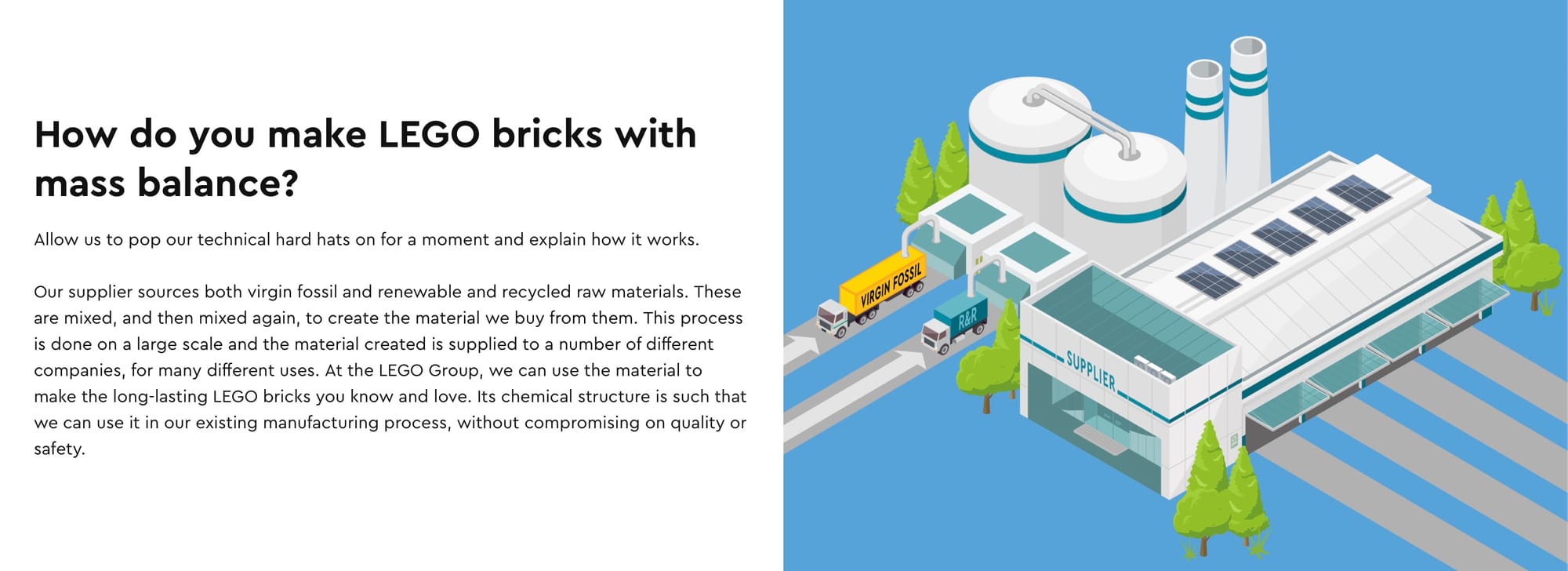
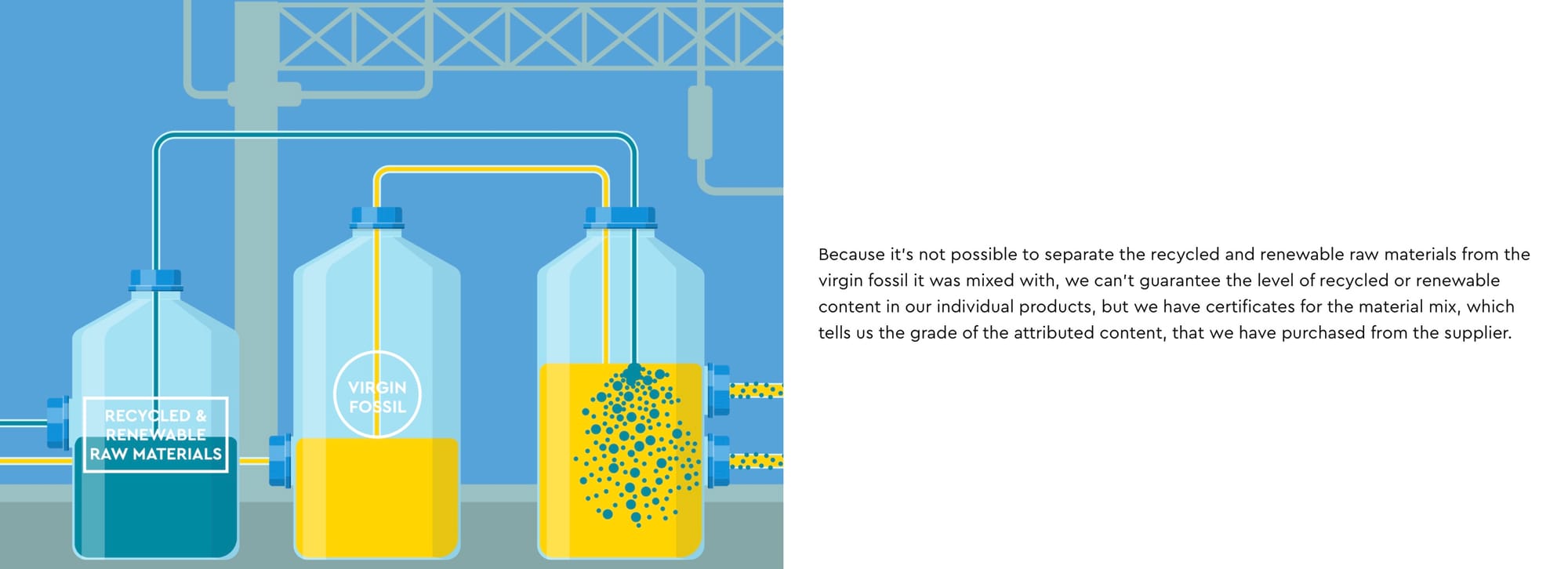
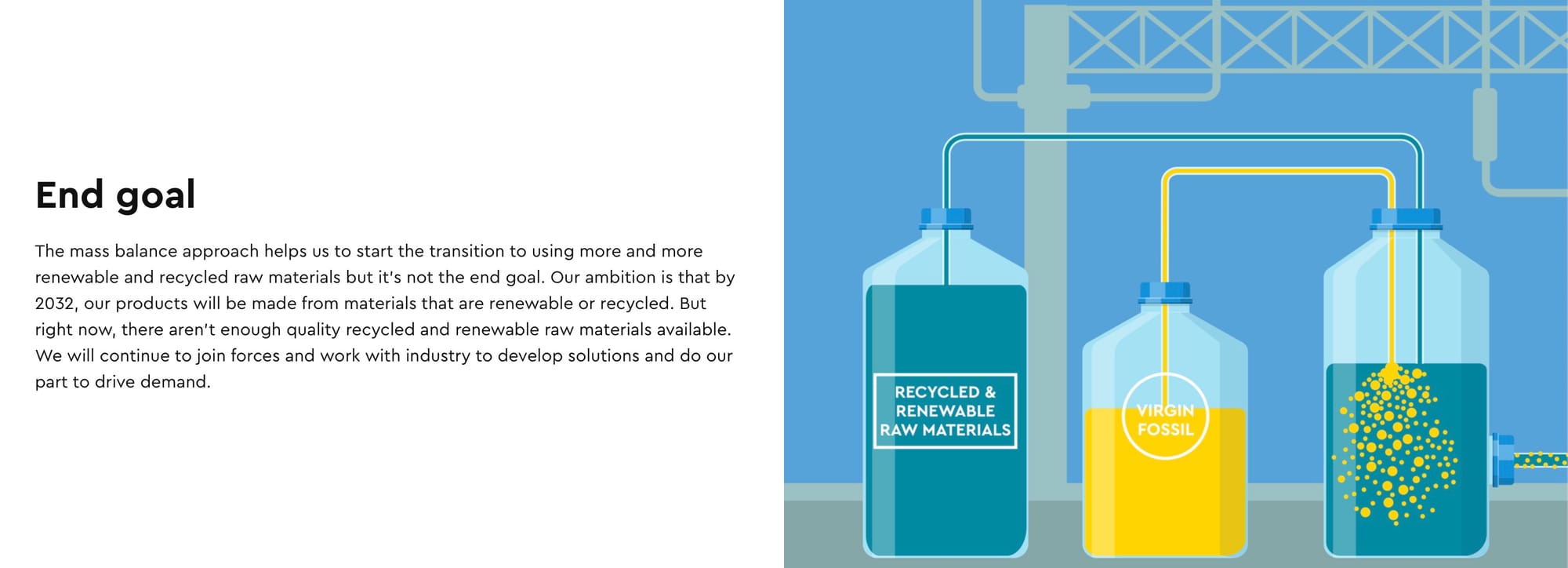
Setting a Standard
Lego and CEO Christiansen have made it clear sustainability is a priority and that they intend to set the standard for the industry to progress. It's refreshing to see Christiansen so outspoken about their efforts to speed up the pace of development in recycled plastics and the responsibility they feel as a large and profitable organization to allocate funds accordingly. But what impressed me the most was Lego's determination - that even when it got difficult to build the model, they back-tracked, found a new way, and pressed on anyway -setting an example for not only our kids, but for their peers as well.


